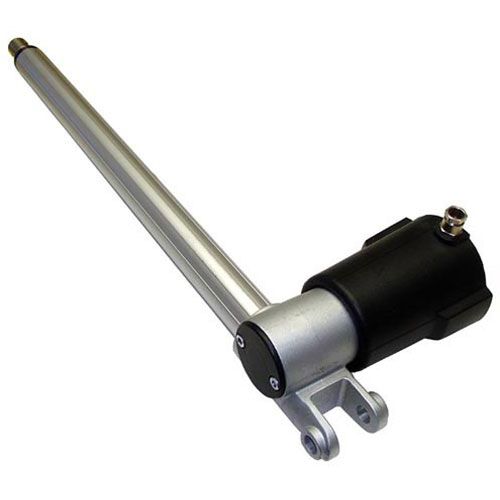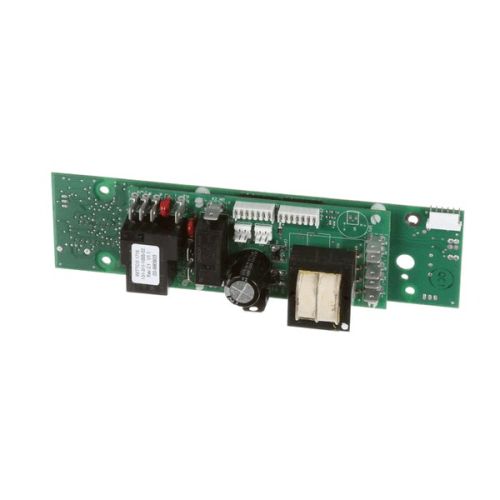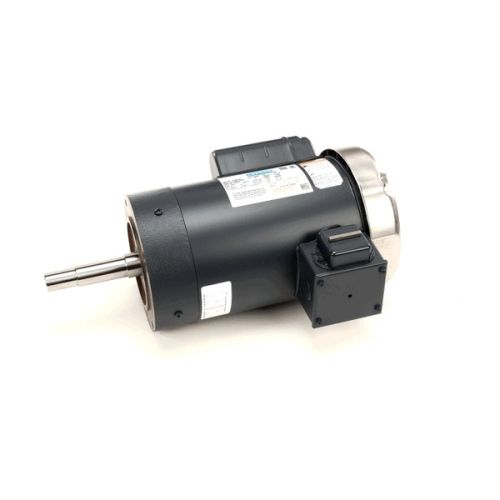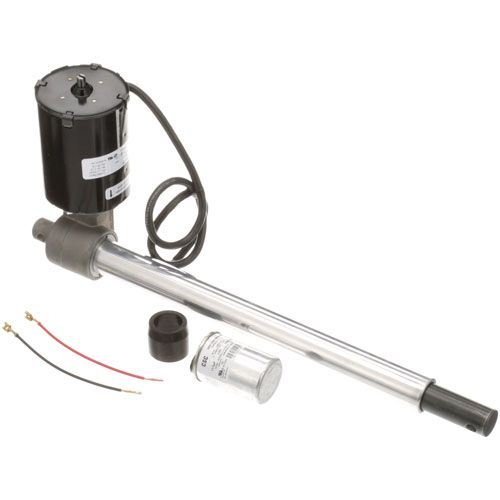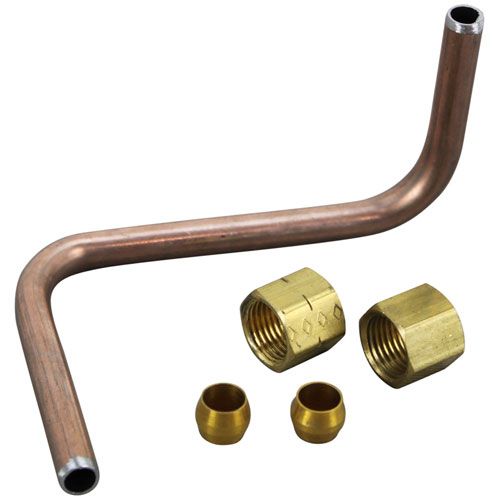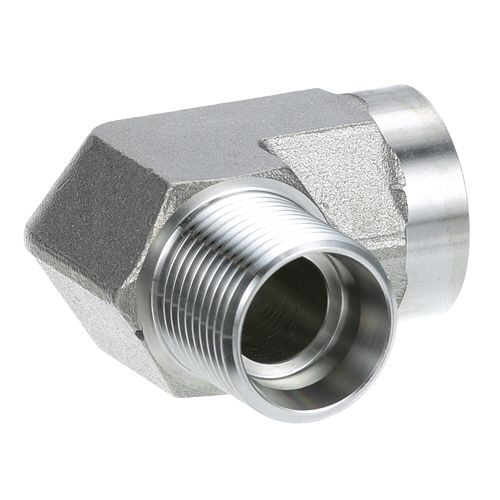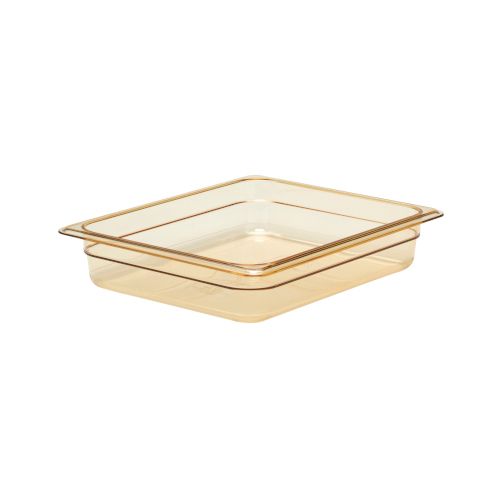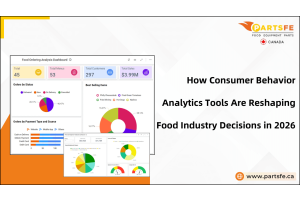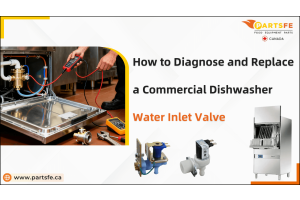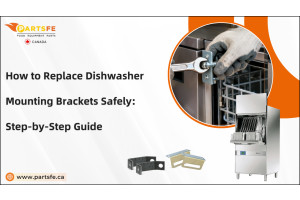Essential Commercial Kitchen Supplies
Operating a successful restaurant or catering business requires more than just culinary skills; it demands a well-equipped commercial kitchen. Understanding the essential commercial kitchen supplies is key to creating an efficient, safe, and high-performing kitchen environment. This comprehensive guide will cover everything from fundamental supplies to maintenance tips, ensuring you have the tools needed for success.
What Are the Fundamental Commercial Kitchen Supplies You Need?
When setting up a commercial kitchen, it’s important to start with the essentials. Below is a detailed breakdown of fundamental commercial kitchen supplies that every kitchen should have:
1. Cooking Equipment
Cooking equipment forms the backbone of any commercial kitchen. It includes a variety of machines and tools that facilitate food preparation, cooking, and baking.
- Ovens: Essential for baking, roasting, and broiling, commercial ovens come in various types, including conventional, convection, and combi ovens. Convection ovens are particularly favored for their ability to cook food evenly and reduce cooking times.
- Stoves and Ranges: Providing multiple burners, stoves are critical for sautéing, boiling, and frying. They come in various configurations, such as gas and electric, and offer different features like griddles or broilers for added versatility.
- Fryers: Necessary for establishments that offer fried foods, fryers come in various sizes and configurations. Understanding the type of fryer—gas or electric—and its capacity is essential for meeting your menu demands.
- Grills and Griddles: Ideal for restaurants that serve breakfast or grilled items, grills and griddles offer a quick and efficient way to cook a variety of dishes.
2. Food Preparation Tools
Food preparation tools are crucial for the initial stages of cooking and involve a range of utensils and appliances that enhance efficiency.
- Knives and Cutting Boards: High-quality chef knives are indispensable for any kitchen, allowing chefs to perform precise cuts. Cutting boards should be color-coded to prevent cross-contamination between raw and cooked foods.
- Mixers and Blenders: Commercial-grade mixers are essential for baking and dough preparation, while blenders are perfect for soups, sauces, and smoothies. Some kitchens may also benefit from immersion blenders for in-pot blending.
- Food Processors: These machines can chop, slice, and puree, making them invaluable for food prep. A high-capacity food processor can save time on labor-intensive tasks.
- Measuring Tools: Accurate measurement is vital in cooking. Invest in quality measuring cups and spoons, and consider digital scales for precise ingredient portions.
3. Storage Solutions
Proper storage is vital for maintaining food safety and organization in the kitchen. The right storage solutions can help manage inventory and keep ingredients fresh.
- Refrigerators and Freezers: Commercial refrigeration units come in various sizes, including reach-in and walk-in options. Ensure that these units are energy-efficient and maintain appropriate temperatures to prevent spoilage.
- Dry Storage Shelves: Open shelving or cabinets for dry goods allow for easy access and organization. Look for units that are adjustable and made from durable materials to withstand the kitchen environment.
- Food Storage Containers: Use clear, airtight containers to store bulk items. Labeling these containers helps maintain an organized kitchen and ensures proper inventory management.
4. Serving Equipment
Once the food is prepared, it needs to be served properly. Effective serving equipment enhances the dining experience and ensures efficient service.
- Dinnerware: Invest in high-quality plates, bowls, and cutlery. The choice of materials, such as porcelain or melamine, can impact durability and aesthetics.
- Serving Trays and Baskets: For quick service, particularly in casual dining or fast-food environments, serving trays and baskets can facilitate efficient delivery of food to customers.
- Chafing Dishes: For buffets or catered events, chafing dishes keep food warm and presentable. Consider different sizes and styles that match your restaurant's aesthetic.
5. Cleaning Supplies
Maintaining hygiene is non-negotiable in any kitchen. Quality cleaning supplies help ensure that your kitchen meets health regulations and keeps staff and customers safe.
- Dishwashers: A commercial dishwasher is essential for quickly cleaning large volumes of dishes, utensils, and cookware. Look for models with energy-efficient features to reduce water and energy consumption.
- Cleaning Solutions: Invest in a range of commercial-grade cleaning solutions that are effective against grease, grime, and bacteria. Ensure that staff is trained to use these products safely and effectively.
- Sanitation Equipment: Mops, brooms, and clothes are necessary for keeping the kitchen clean. Consider color-coded cleaning tools to prevent cross-contamination.
- Handwashing Stations: Handwashing stations must be accessible to ensure staff can maintain proper hygiene while preparing and serving food.
These commercial kitchen supplies lay the foundation for a well-functioning kitchen. When equipped with the right tools, chefs can focus on creating delicious dishes without the distraction of inadequate supplies. Looking for reliable restaurant supplies in Canada? At PartsFeCa, you can easily buy essential restaurant equipment parts online in Canada, including oven thermostats, fryer pots, dishwasher drain pumps etc. Our extensive inventory ensures you find the right components to maintain peak performance in your kitchen. Experience hassle-free shopping with fast shipping and exceptional customer service!
How to Select the Best Commercial Kitchen Supplies for Your Operations?
Choosing the right commercial kitchen supplies can be overwhelming given the variety of options available. Here are some in-depth tips to help streamline the selection process:
1. Assess Your Needs
Before purchasing any commercial kitchen cooking equipment, consider the type of cuisine you will be serving. Different cuisines require specific equipment; for example, Asian restaurants may need woks and steamers, while a bakery will require specialized ovens and mixers.
2. Set a Budget
Understanding the average cost of commercial kitchen equipment is crucial. Create a budget that covers initial purchases, installation, and potential future upgrades. Remember that investing in high-quality equipment can lead to long-term savings through durability and reduced maintenance costs.
3. Prioritize Quality Over Quantity
While it may be tempting to buy cheaper options, investing in the best commercial kitchen equipment can lead to long-term savings through durability and performance. Research brands and models, and read customer reviews to make informed decisions.
4. Research Brands and Suppliers
Choosing reliable commercial kitchen equipment brands is essential for quality and service. Investigate supplier reputations, warranty options, and customer service ratings. Building relationships with reputable suppliers can also provide additional benefits, such as bulk purchasing discounts.
5. Consider Energy Efficiency
Investing in energy-efficient appliances can lead to significant savings on utility bills. Look for products with high energy ratings or those that feature energy-saving modes. This not only helps reduce costs but also minimizes your environmental impact.
6. Size and Layout
Ensure that the commercial kitchen equipment near me fits well in your kitchen layout. Consider space limitations and workflow efficiency when selecting large appliances. Equipment should be arranged logically to facilitate a smooth flow from food prep to cooking to serving.
7. Compliance with Regulations
Make sure the equipment you select complies with local health and safety regulations. Check for certifications and ensure that your equipment meets industry standards.
By following these steps, you can ensure that your kitchen is equipped with the best supplies tailored to your specific needs.
Must-Have Appliances for a Fully Equipped Commercial Kitchen
To create a fully equipped commercial kitchen, certain appliances stand out as must-haves. Here are key appliances that enhance efficiency and productivity:
1. Commercial Ovens
A reliable commercial oven is essential for baking, roasting, and preparing a variety of dishes. Different types of ovens serve different purposes:
- Convection Ovens: Use fans to circulate hot air, cooking food more evenly and quickly. Ideal for baking and roasting.
- Combi Ovens: Combine steam and convection cooking, offering versatility for various cooking methods.
- Deck Ovens: Often used in pizzerias, these ovens provide consistent heat for baking crusts to perfection.
2. Commercial Refrigeration Units
Effective refrigeration is crucial for maintaining food quality. Consider the following:
- Walk-In Coolers: Ideal for larger operations that require ample storage for perishable items. They allow for easy access and organization.
- Reach-In Refrigerators: Perfect for smaller kitchens, these units can be placed conveniently in the cooking area for quick access.
- Freezers: Ensure proper freezing options for long-term food storage. Commercial freezers should maintain consistent temperatures to prevent freezer burn.
3. Commercial Dishwashers
A high-efficiency dishwasher is vital for maintaining cleanliness while saving time. Features to consider include:
- High Capacity: Allows for quick cleaning of large quantities of dishes, saving time during peak hours.
- Energy Efficiency: Look for models that reduce water and energy consumption without compromising performance.
- Speed Settings: Some models offer various wash cycles to accommodate different types of dishware.
4. Food Processors
A food processor is invaluable for food prep, saving time on tasks like chopping, slicing, and mixing. Features to consider include:
- Power and Capacity: Choose a model that suits the volume of food you’ll be preparing.
- Versatility: Look for attachments that allow for various tasks, such as grating or shredding.
5. Griddles and Grill Tops
Griddles and grill tops are great for preparing a wide range of dishes quickly. Features to consider include:
- Temperature Control: Models with precise temperature controls allow for consistent cooking results.
- Non-Stick Surfaces: These make cooking and cleaning easier, reducing the need for excess oil.
6. Ventilation Systems
Proper ventilation is crucial for maintaining air quality and temperature control in the kitchen. Key features to consider include:
- Hood Systems: Capture heat, smoke, and grease to ensure a safe working environment.
- Make-Up Air Units: Help balance air pressure and improve overall ventilation in the kitchen.
7. Fryers
For establishments specializing in fried foods, quality fryers are essential for achieving perfect results. Consider:
- Capacity and Type: Depending on your menu, choose between countertop or floor-model fryers, gas or electric.
- Filtration Systems: Some models come equipped with filtration systems to prolong oil life and enhance food quality.
Investing in these appliances not only enhances the kitchen's functionality but also contributes to the overall efficiency of restaurant operations.
How Commercial Kitchen Supplies Enhance Food Safety and Hygiene?
Maintaining high standards of food safety and hygiene is critical in any commercial kitchen. Here’s how quality commercial kitchen supplies contribute to a safer environment:
- Proper Equipment Materials: Using stainless steel or food-grade materials for kitchen supplies reduces the risk of contamination. Stainless steel is non-porous, easy to clean, and resistant to rust and corrosion, making it ideal for food preparation areas.
- Efficient Cleaning Tools: Investing in commercial kitchen cleaning equipment facilitates thorough cleaning. High-quality dishwashers and sanitation tools minimize the risk of foodborne illnesses. Consider products that are specifically designed for commercial kitchens, as they often offer more robust cleaning capabilities.
- Temperature Control: Refrigerators and freezers must maintain appropriate temperatures to prevent food spoilage. Regular maintenance of these units ensures compliance with food safety standards. Implementing temperature logging systems can help monitor and maintain proper conditions.
- Safe Food Handling Tools: Having designated tools for raw and cooked foods prevents cross-contamination. Color-coded cutting boards and utensils are effective solutions, ensuring that staff can easily distinguish between tools used for different types of food.
- Regular Maintenance: Establishing a routine maintenance schedule for your commercial kitchen equipment can identify potential hazards before they become problems. This includes checking for wear and tear, ensuring all equipment is functioning correctly, and replacing parts as needed.
- Employee Training: Regular training sessions for kitchen staff on food safety practices and equipment use are essential. Topics should include proper handwashing techniques, the importance of cross-contamination prevention, and the correct use of cleaning products.
By prioritizing food safety and hygiene, kitchens can protect their customers and enhance their reputation.
Top Brands for Reliable Commercial Kitchen Supplies
When investing in commercial kitchen supplies, choosing reputable brands can make all the difference. Here are some top brands known for their reliability and quality:
- Vulcan: Vulcan is renowned for its range of commercial cooking equipment, including ovens and ranges. Their products are designed for heavy use and durability, making them a favorite among chefs.
- Hobart: Famous for its dishwashing and food preparation equipment, Hobart is a leader in providing efficient and reliable kitchen appliances. Their products often feature advanced technology that enhances performance.
- Rational: Specializing in combi ovens, Rational offers innovative technology that maximizes cooking efficiency and quality. Their ovens are popular for their versatility and ability to cook multiple types of food simultaneously.
- Traulsen: Traulsen is recognized for high-quality refrigeration units, providing energy-efficient options that meet rigorous standards. Their products are built to withstand the demands of busy kitchens.
- BUNN: For coffee and beverage service, BUNN is a trusted name, known for its reliable coffee makers and dispensers. Their products are designed for high-volume environments, ensuring consistent quality.
- Cambro: Cambro offers a wide range of food storage solutions, including containers and transport equipment that ensure food safety. Their products are designed for durability and easy organization.
- Manitowoc: This brand specializes in ice machines and refrigeration, providing high-quality solutions for commercial kitchens. Their products are known for their reliability and energy efficiency.
Selecting equipment from these commercial kitchen equipment brands ensures quality and performance for your operations.
How to Maintain and Replace Your Commercial Kitchen Supplies Efficiently?
Commercial kitchen equipment maintenance is vital for ensuring longevity and optimal performance. Here are some strategies to keep in mind:
- Regular Cleaning: Implement a daily cleaning routine for all equipment. Use appropriate cleaning supplies to maintain hygiene and prevent build-up. Ensure that staff understands the importance of regular cleaning and the proper methods to do so.
- Schedule Maintenance: Create a schedule for routine maintenance checks. Regular inspections can identify issues before they escalate, prolonging the commercial kitchen equipment life expectancy. This includes checking for leaks, rust, and signs of wear.
- Train Staff: Ensure that all kitchen staff are trained in proper use and maintenance of equipment. This reduces wear and tear and enhances safety. Provide hands-on training sessions and written guides for reference.
- Keep Spare Parts: Having a relationship with commercial kitchen equipment parts suppliers can streamline repairs. Keeping common spare parts on hand reduces downtime, allowing your kitchen to operate smoothly.
- Replace When Necessary: Identify when equipment needs to be replaced based on performance issues or age. Knowing the commercial kitchen equipment life expectancy can guide replacement decisions, helping you budget for new purchases.
- Document Maintenance Activities: Keep a log of all maintenance activities, repairs, and replacements. This documentation can help identify recurring issues and provide insights into equipment lifespan, aiding future purchasing decisions.
Read on: Commercial Restaurant Kitchen Cleaning Guide: Daily, Weekly, and Monthly
By following these maintenance practices, kitchens can ensure their equipment remains in peak condition, minimizing unexpected costs and interruptions.
Conclusion
Equipping a commercial kitchen with essential supplies is foundational to achieving culinary excellence and operational efficiency. From selecting the right commercial kitchen equipment to understanding maintenance strategies, investing in quality tools is crucial. Whether you’re starting a new restaurant or upgrading an existing kitchen, the right supplies will enhance productivity, safety, and overall customer satisfaction.
FAQs
What are the latest trends in commercial kitchen supplies?
Recent trends include the rise of energy-efficient appliances, smart kitchen technology, and sustainable materials that focus on reducing waste and improving efficiency. Many kitchens are also integrating cloud-based management systems to streamline operations.
How can I optimize the layout of my commercial kitchen for maximum efficiency?
Consider the flow of movement, grouping equipment by function, and ensuring that frequently used items are easily accessible to minimize steps and time spent in the kitchen. Creating designated stations for prep, cooking, and plating can further enhance efficiency.
What are the best practices for training staff to use commercial kitchen supplies safely?
Provide comprehensive training sessions, create user manuals, and ensure that staff understands the importance of hygiene and equipment care. Regular refreshers can also help maintain safety standards, and encouraging open communication can foster a culture of safety.


